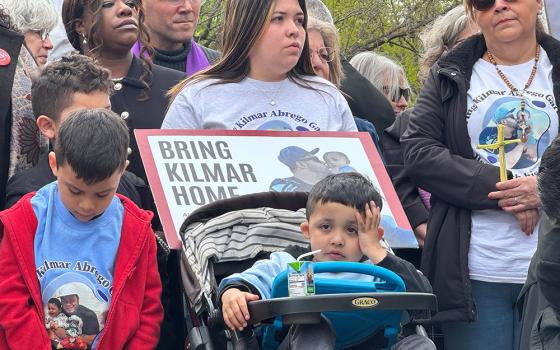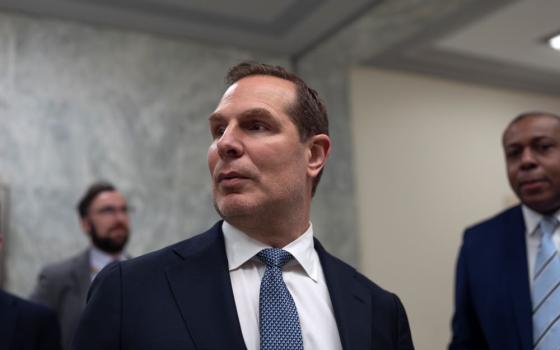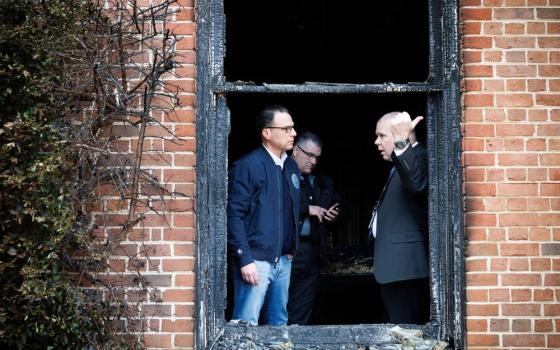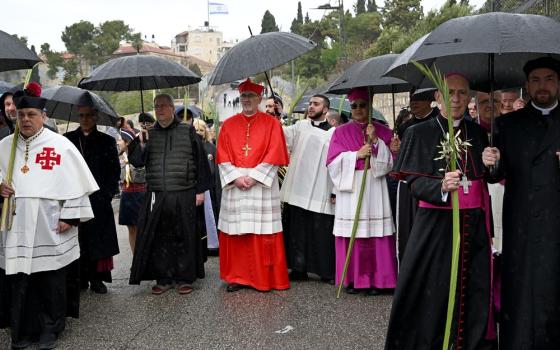Facing a virtually unprecedented examination of its record on child sexual abuse by a U.N. panel, a senior Vatican official today asserted that the Catholic church wants to be "an example of best practice" in the prevention of abuse.
Italian Archbishop Silvano Tomasi, the Vatican's representative to the United Nations in Geneva, spoke this morning to the Committee on the Convention of the Rights of the Child, a 1989 United Nations treaty which the Vatican ratified in 1990.
Although the U.N. panel has no power to compel the Vatican to do anything, its body of experts is expected to make recommendations after the day-long hearing. In effect, today marks the first time senior Vatican officials have appeared before an independent body to defend the church's handling of the abuse scandals that have erupted over the past decade.
The seriousness with which the Vatican is taking the process is reflected in the fact that it dispatched not only Tomasi but also Maltese Bishop Charles Scicluna, who served for ten years as the Vatican's top sex abuse prosecutor and is widely seen as a leading reformer.
Concern for potential fallout from the hearing was also reflected in the fact that the Vatican released a Q&A with Tomasi and a lengthy statement by Jesuit Fr. Federico Lombardi, the Vatican spokesman.
In his prepared remarks to the U.N. panel, Tomasi painted a picture of a church committed to change.
"The Holy See has delineated policies and procedures designed to help eliminate abuse and to collaborate with state authorities to fight against this crime," he said.
"The Holy See is also committed to listen carefully to victims of abuse and to address the impact such situations have on survivors of abuse and their families," Tomasi said.
Tomasi argued that the Vatican has adopted strong anti-abuse measures for personnel under its direct supervision, citing the fact that a former papal ambassador in the Dominican Republic accused of abuse, Polish Archbishop Jozef Wesolowski, is facing a criminal procedure before a Vatican tribunal.
Moreover, Tomasi said, the Vatican has also encouraged bishops and local churches around the world to adopt similar measures, pointing among other things to the Charter for the Protection of Children and Young People of the American bishops.
Such measures, Tomasi claimed, "will help eliminate the occurrence of child sexual abuse by clergy and other church personnel."
Tomasi also said that Francis is committed to reform, pointing to the recent creation of a new papal commission to fight abuse.
In his statement, Lombardi insisted that Francis has a special love for children and that "the Holy See is a promoter … of an immense current throughout the world of love and service for the well-being of children."
Lombardi said the Vatican is committed to "full availability to collaborate" with the U.N. panel, but also said that some questions submitted in advance by the body "seem to assume that bishops or religious superiors act as representatives or delegates of the pope," an assumption that Lombardi said "lacks any foundation."
Since the beginning of the abuse crisis, critics and attorneys for victims have occasionally tried to trace responsibility to the Vatican, but officials have insisted that bishops and other leaders in the church are not "employees" of the pope and thus Rome is not responsible for how they handled abuse cases.
Judging by commentary ahead of today's session, that's an argument that won't play well with at least some victims.
"Many of us who were abused by an assistant pastor looked to the pastor to make things right, then the bishop, then the Vatican," said Barbara Blaine of the Survivors Network for Those Abused by Priests.
"No one fixed the problem. What authority in the world can hold the Vatican accountable?"
(Follow John Allen on Twitter: @JohnLAllenJr)




